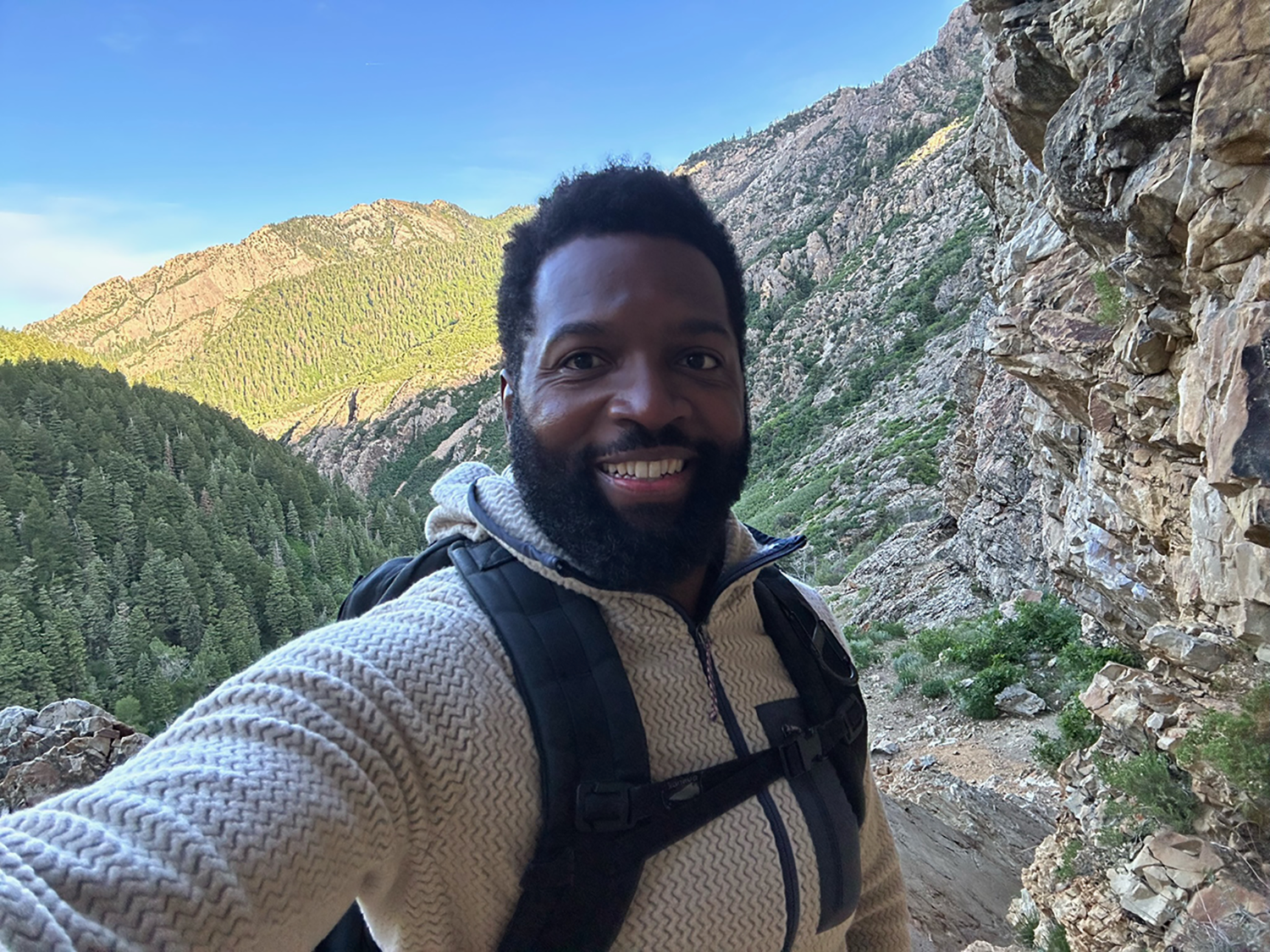Baratunde Thurston has a knack for flipping the script. From paragliding over the Great Salt Lake to see its climate change-induced transformation to fly fishing with foster youth in Arkansas’ Ouachita Mountains through a program that uses nature to relieve stress, he’s traveled the country in search of unexpected stories for America Outdoors. The six-part series, which recently premiered its second season, has a simple premise: We can’t begin to know our natural environments without first understanding the people who live, work, and play in them. Thurston tells us about his ever-evolving relationship with the outdoors, what makes America Outdoors resonate, and his most memorable National Forest backdrops.

Photo by Baratunde Thurston.
When did your love for the outdoors begin?
My mom was very adventurous and exposed me to a lot. We’d go hiking, biking, and camping all over the East Coast, from Maine to Florida. I became a Boy Scout and have amazing memories of spending a summer at a camp in upstate New York, where I’d climb a new mountain every week, canoe on a lake, and make campfires. Having grown up in Washington D.C. in the ‘80s, I had an extraordinary relationship to the outdoors.
Has America Outdoors changed your relationship to nature?
For a while, I was living my digital life in New York with occasional outdoor dabbles, but something started to pull at me to get back to nature. Shortly after moving to Los Angeles to do just that, America Outdoors emerged as a possibility. Since filming started in 2021, I notice things more. Birds and animals. Plants and flowers. I see trails and wonder if there are truffles on the forest floor. I consider the Earth a lot more in my day to day and feel more at home wherever I am outdoors.
How does the show pick its stories?
We find stories that are diverse in so many ways: in ecology, geography, demographics, physicality, and intention. There are the big conservation and adventure stories, but we also focus on people who work in and with the outdoors, because we want to remind viewers that it isn’t only a place where people play or do extreme sports.
Do National Forests feature in America Outdoors?
A lot! For season two, I went on a turkey hunt in New Mexico’s Cibola National Forest, rock climbing in Utah’s Uinta-Wasatch-Cache National Forest, and fly fishing in Arkansas’ Ouachita Mountains.
What was a highlight from filming season two?
Near Northern California’s Klamath National Forest, in the Klamath Basin, we visited a regenerative ranch, which I didn’t know was possible. The family behind Agency Ranch has restored it to a much more natural state. They still run cattle, but in a very particular way. They’ve rehabilitated wetlands and brought fish back. They’re thinking more holistically about their role in the water cycle. Seeing the way their efforts intersect with Indigenous practices and ranch culture was very meaningful.
Do you have a favorite National Forest?
Idaho’s Boise National Forest may have been one of the most memorable places we’ve visited with the show. We went with a group of teenagers who are refugees and part of a program called New Roots. This experience was one of their first impressions of America. At one point, the program leader pulled out a map and asked the kids, “Where are we?” And the kids yelled, “A National Forest!” And she said, “What does that mean?” And they answered, “That means it’s our forest!” It gave them a right to be there and that’s so beautiful.
Follow Thurston on Instagram at @baratunde and learn more about him at baratunde.com.
Stream seasons one and two of America Outdoors, in addition to the show’s compendium science-focused online series America Outdoors: Understory, on the PBS YouTube channel.
Cover photo by Baratunde Thurston.

